What It is | Bhastrika Pranayama Benefits | How to Do | Types | Precautions & Contraindications
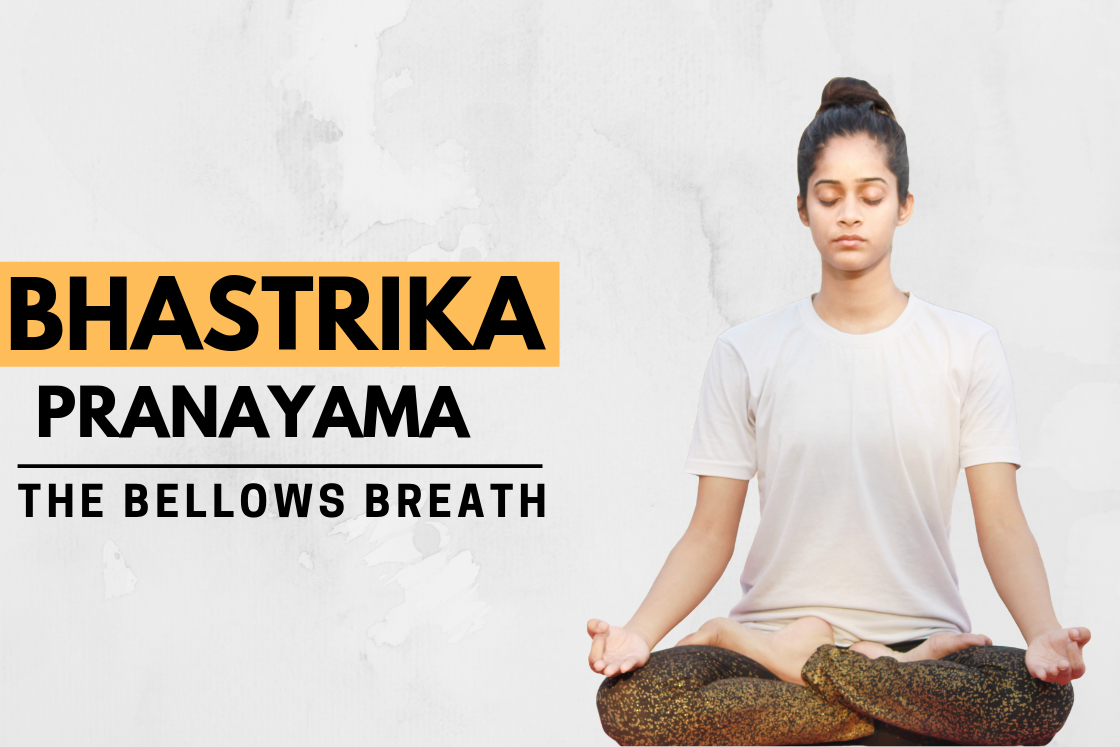
Bhastrika Pranayama is a classical Hatha Yoga pranayama practice that builds heat, awakens energy, and sharpens mental clarity. Its vigorous inhalation and exhalation resemble the movement of a blacksmith’s bellows—steady, powerful, and rhythmic. This dynamic breath clears dullness, strengthens the respiratory system, and prepares the body for deeper yogic practices.
Mentioned in texts such as the Hatha Yoga Pradipika, Bhastrika is described as a purifier of the nadis and a stimulant for the inner fire (agni). In modern practice, it is also recognised for its impact on lung capacity, oxygen exchange, and autonomic balance.
What is bhastrika pranayama(Bellows breath)
Bhastrika comes from the Sanskrit word bhastra, meaning “bellows.” Just as a bellows draws air in and pushes it out with equal force to intensify a flame, Bhastrika uses a strong, active inhalation and exhalation to ignite heat within the body.
Both phases of the breath are deliberate and equally powerful. The diaphragm moves freely and rhythmically, pumping fresh air deep into the lungs and expelling stale air with each cycle. This rapid air exchange increases oxygen uptake, produces heat, and awakens the digestive fire. The breath stimulates the solar plexus (manipura), influencing metabolism, vitality, and emotional steadiness.
Because Bhastrika generates internal heat, yogis traditionally practise it before demanding postures or deeper pranayama. This warming effect is why some lineages refer to it as the “breath of fire.” In Kundalini Yoga, it is often taught as a preparatory breathing technique to energise the system and activate the subtle channels.
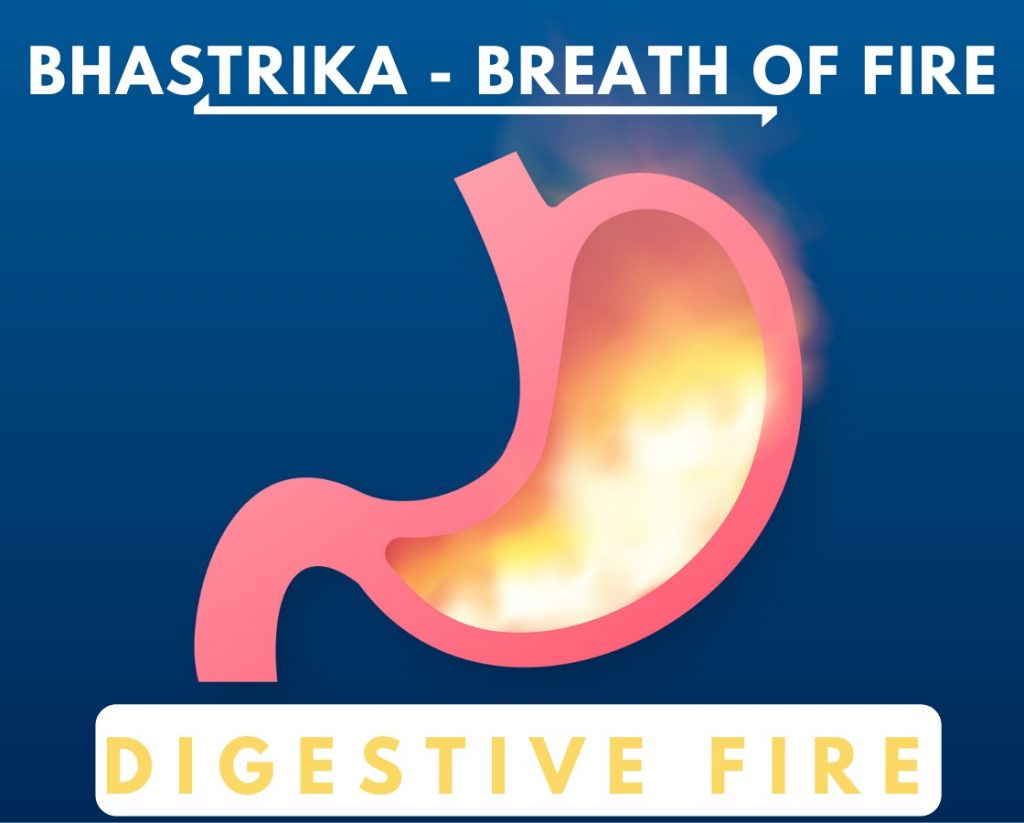
Advanced practitioners sometimes work at a fast pace of three to four breaths per second. At this speed, the warmth in the abdomen and chest can be felt within the first round itself.
How to do bhastrika pranayama(step-by-step)
- Sit in Sukhasana, Vajrasana, or any stable posture with the spine upright. Relax the shoulders and rest the hands on the knees.
- Close your eyes and take a few slow breaths to release tension in the chest and abdomen.
- Inhale deeply through the nose, expanding the chest and abdomen.
- Begin breathing in and out with equal force. Keep the breath strong, rhythmic, and driven by the diaphragm.
- Maintain a steady pace of about one breath per second for medium practice. Keep the face relaxed and avoid rocking the body.
- After ten breaths, inhale deeply and exhale slowly to complete Round 1.
- Rest for 10–15 seconds with natural breathing.
- Continue with the next rounds:
- Round 2: 20 breaths
- Round 3: 30 breaths
- After each round, take a deep breath, exhale gently, and rest briefly.
- After the final round, breathe slowly for one minute and allow the warmth to settle.
- Stay seated quietly for a short moment before opening your eyes.
Bhastrika pranayama with arms movement
- Sit straight with the hands beside the shoulders and make soft fists.
- Inhale forcefully while lifting the arms overhead and opening the fists.
- Exhale forcefully while lowering the arms and closing the fists.
- Practise 10 breaths per round and rest before repeating.
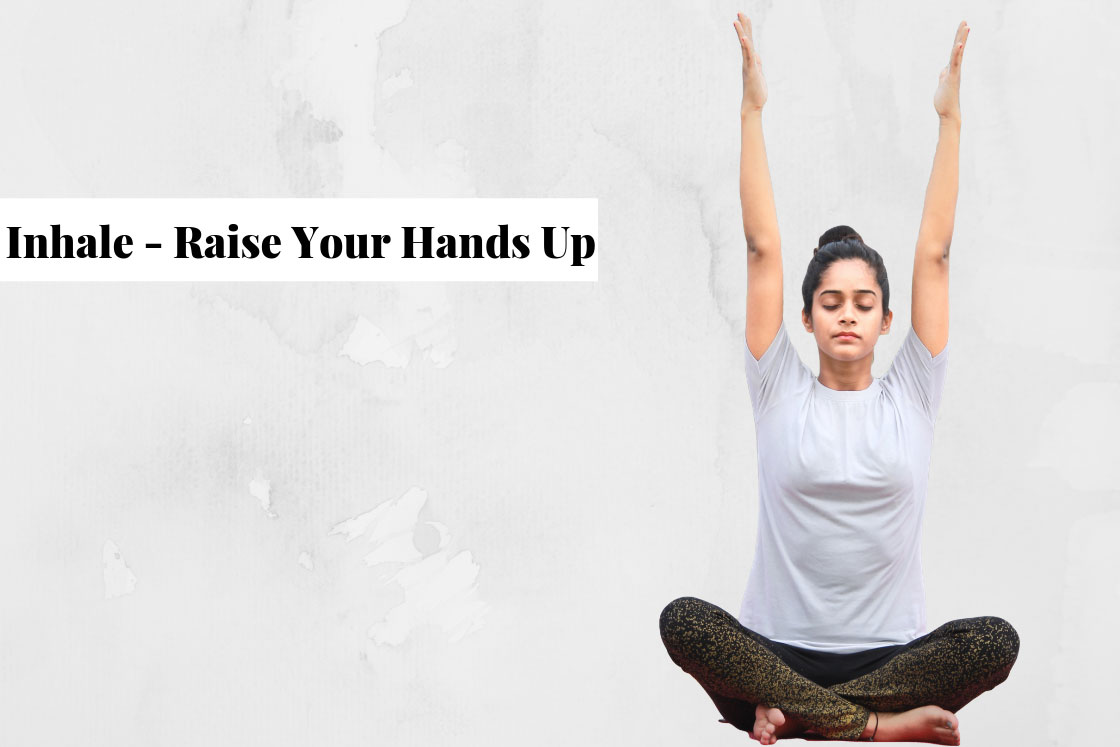
This variation increases heat, opens the chest, and stimulates circulation.
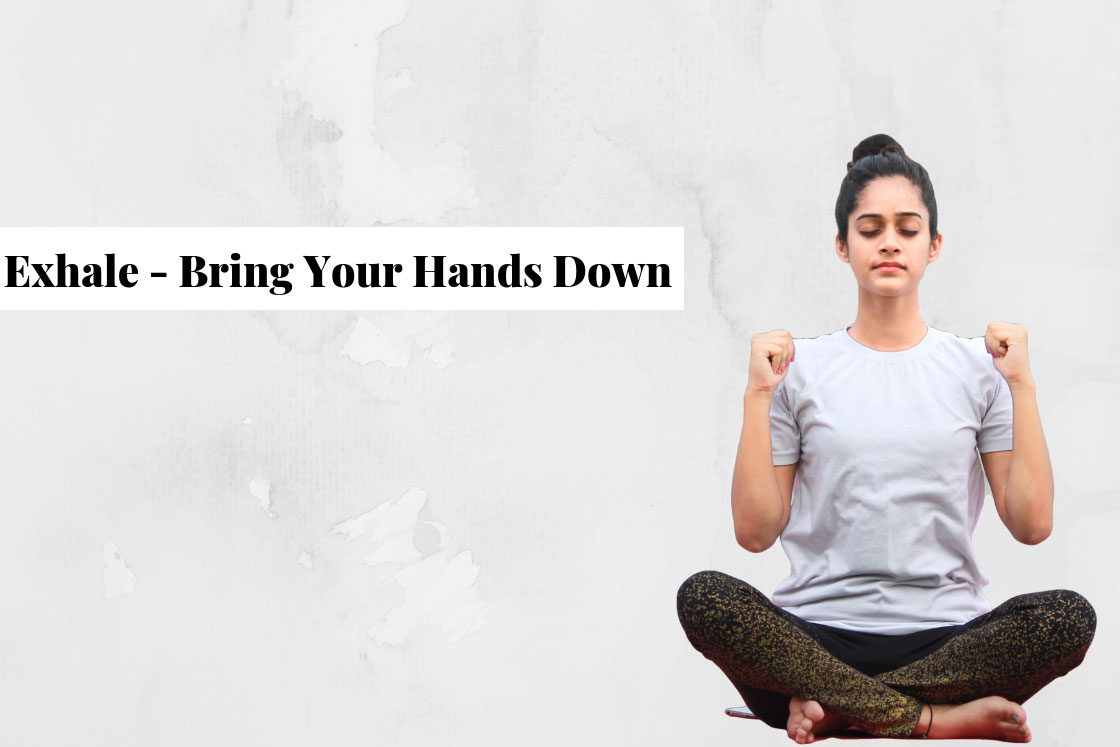
Best Time to Practise
The ideal time to practise Bhastrika Pranayama is early in the morning when the air is cool and the mind is clear. Morning practice helps activate the digestive fire and prepares the body for the day. If the morning is not possible, the evening is also suitable, as long as the stomach is empty.
Duration
Most practitioners complete Bhastrika in three rounds, with short rest periods in between. A standard practice takes 3–5 minutes, depending on your pace and breath capacity. Beginners may start with shorter rounds and gradually build up once the breath becomes steady.
Suggested breath counts
- Round 1: 10 breaths
- Round 2: 20 breaths
- Round 3: 30 breaths
These counts offer a balanced, heating effect without strain. Advanced practitioners may extend the rounds, but only with proper guidance.
Note: Bhastrika should always be performed on an empty stomach. Maintain a gap of at least 3–4 hours after a meal. Practising too soon after eating can create discomfort because of the strong abdominal movement.
Types of bhastrika pranayama
Bhastrika can be practised at different speeds depending on breath capacity and experience. The three main types are distinguished by the rate of breathing and the intensity of the movement.
1. Fast Pace Bhastrika – teevre gati
Fast pace Bhastrika uses a very high respiratory rate, often reaching three to four breaths per second. The breath is loud, sharp, and highly energising, and advanced practitioners may reach up to 230 breaths per minute.
This type generates heat quickly and should be avoided by anyone with heart conditions, high blood pressure, hernia, back pain, or general weakness.
2. Medium Pace Bhastrika – madhyam gati
Medium pace Bhastrika is performed at roughly one breath per second. The sound is steady but less intense than the fast version.
It is suitable for practitioners who are already comfortable with Kapalbhati or those with regular pranayama experience, providing heat and energy without excessive strain.
3. Slow Pace Bhastrika – samanya gati
Slow pace Bhastrika uses one breath every two seconds, with controlled and gentle movement.
This version is recommended for beginners, elderly practitioners, and anyone with high blood pressure, heart concerns, or a weak respiratory system. It provides the benefits of Bhastrika in a safe, manageable way.
Precautions & contraindications
- Avoid Bhastrika during pregnancy, as the strong abdominal movement and heat are unsafe.
- Practise only on an empty stomach, keeping a gap of 3–4 hours after meals.
- People with high blood pressure, heart conditions, or hernia should avoid fast breathing and practise only at a slow pace.
- Do not practise during fever, very hot weather, or extreme fatigue, as the breath generates additional heat.
- Stop immediately if you feel dizziness, nausea, or faintness, as this indicates overexertion.
- Avoid Bhastrika during respiratory infections, asthma flare-ups, or severe cough, since forceful breathing can worsen symptoms.
Bhastrika pranayama benefits
Bhastrika Pranayama strengthens the respiratory system, improves oxygen uptake, and increases lung capacity through rapid diaphragmatic movement. Its heating action stimulates digestion, clears chest congestion, and balances the nervous system, leaving the body energised and the mind steady. Regular practice also enhances mental clarity and focus by improving circulation and reducing Kapha-related heaviness.
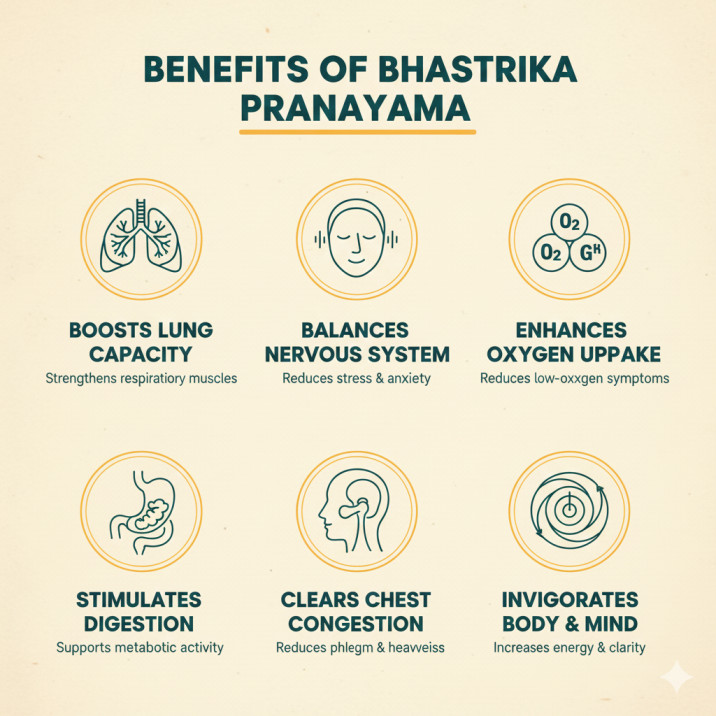
- Improves lung capacity and strengthens respiratory muscles: The rapid diaphragmatic movement increases air exchange in the lungs and trains the intercostal and respiratory muscles. Studies on yogic breathing show measurable improvements in forced vital capacity, breath-holding, and overall respiratory efficiency.
- Enhances oxygen uptake and reduces low-oxygen symptoms: Bhastrika increases the rate of fresh air entering the lungs, improving oxygen saturation. Research on fast yogic breathing demonstrates improved oxygen consumption and better utilisation at the tissue level.
- Reduces stress by balancing the autonomic nervous system: After completing active rounds, the body shifts into parasympathetic dominance, leading to calmer heart rate and reduced stress response. Slow-pace Bhastrika has been shown to lower sympathetic activity and stabilise mood.
- Stimulates digestion and supports metabolic activity: The heat generated from rapid breathing activates the solar plexus and enhances digestive fire (agni). This stimulation improves digestion, nutrient absorption, and metabolism, supporting healthy weight management.
- Clears chest congestion and helps reduce Kapha-related issues: The forceful exhalations help loosen mucus and open the airways, improving airflow. Studies on fast breathing practices show better airway clearance and reduced breathing resistance.
- Improves mental clarity and sharpens focus: The sudden increase in oxygen supply clears heaviness and dullness from the mind. Practitioners experience greater alertness, reduced brain fog, and enhanced concentration after even a short session.
Bhastrika vs Kapalbhati
| Feature | Bhastrika | Kapalbhati |
|---|---|---|
| Breath pattern | Equal inhalation and exhalation | Sharp exhalation, passive inhalation |
| Movement | Chest and abdomen | Mainly abdomen |
| Pace | Medium to fast | Fast |
| Effect | Heat, vitality, digestive fire | Cleansing, detoxification |
Conclusion
Bhastrika Pranayama is a dynamic yet structured breathing practice that builds vitality, steadiness, and clarity. Its powerful breath awakens inner heat, enhances energy, and supports deeper meditation. When practised with precision and care, it becomes a transformative tool for physical health, mental balance, and spiritual development.
FAQs Bhastrika Pranayama
1. Can beginners practise Bhastrika every day?
Yes, beginners can practise Bhastrika daily, but only at a slow pace and for short rounds. The breath should feel steady and comfortable without causing strain.
2. Is Bhastrika safe to do after Kapalbhati?
Yes, Bhastrika can be done after Kapalbhati, but only if the body feels stable and calm. If the breath becomes too heated or restless, it is better to reverse the order.
3. How long should you rest between rounds of Bhastrika?
A rest of 10–15 seconds with natural breathing is normally enough. The break allows the heart rate to settle before beginning the next round.
4. Can Bhastrika help increase body temperature in cold weather?
Yes, the forceful breathing and rapid diaphragmatic movement produce internal heat. This makes Bhastrika helpful for warming the body in cold climates.
5. Is Bhastrika suitable before athletic training or exercise?
Yes, it can act as a warm-up by increasing circulation and activating the respiratory system. However, individuals with heart conditions or high blood pressure should avoid fast rounds.
6. Can you practise Bhastrika if you feel mentally dull or low in energy?
Yes, Bhastrika is especially helpful for clearing lethargy and lifting low energy. The increased oxygen flow and heat help sharpen focus and improve alertness.

